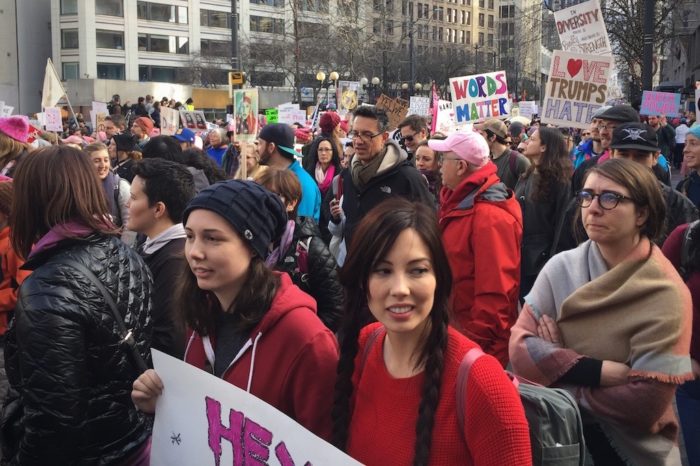
Saturday’s Womxn’s March on Seattle — one of hundreds of sister marches around the world to protest the election and inauguration of President Donald Trump — was not just about women’s issues.
For Kaitlin Torney and Anna Shi, who marched on Saturday with more than 100,000 others in the streets of Seattle, it was also about black lives, immigrants and refugees, disabilities, women’s reproductive rights, the environment and diversity.
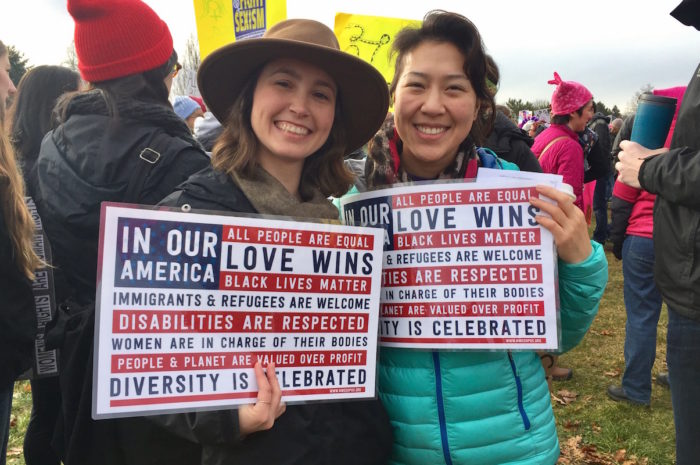
“It’s not just about women, but about everyone,” Shi said. “I think this is just the beginning. Seeing everyone come out is really energizing.”
“We want unity,” Torney said.
The Seattle protest was the largest protest that Olivia Kenney and Nicole Dufva had ever attended.
Dufva said she was marching for black lives, climate change awareness, no Dakota Access Pipeline, science and women’s and immigrant rights.
She hopes that the march sends a message that “we are the majority.”
“It’s important to speak up and raise your voice,” Dufva said.
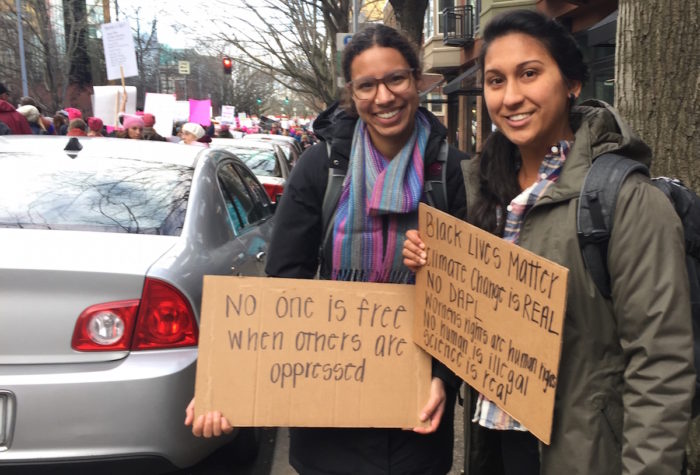
Tzili Mor said attending the event was like group therapy after a “devastating” past few months. The incoming administration’s rhetoric has affected Mor personally, as she is Israeli and Jewish, while the father of her 5-year-old daughter Mari is Muslim.
“It’s nourishing to be around all these warm, good feelings,” Mor said. “We couldn’t be in Washington, D.C., so it was important for us to show solidarity,” Mor said.
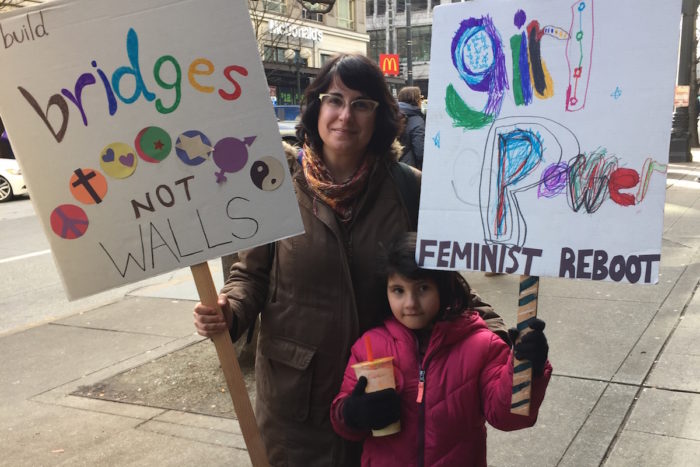
Along the approximately 3.6-mile march route that started in Judkins Park and wound through the Central District, International District and downtown, marchers danced, cheered, listened to speakers and chanted words like “Love trumps hate.”
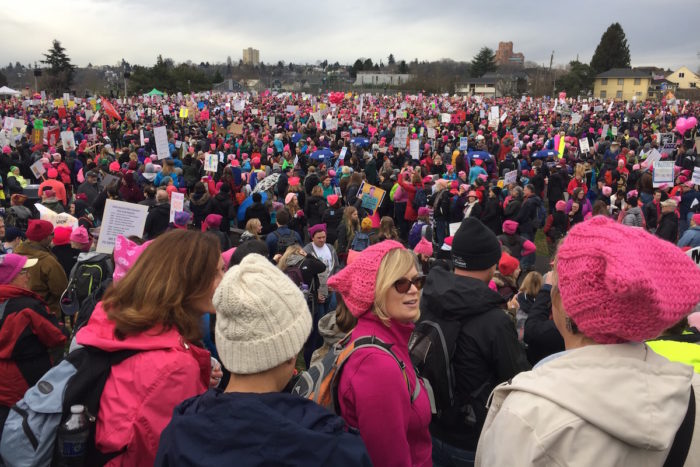
Signs denounced Donald Trump with statements like “You can’t comb over misogyny,” “Girls just wanna have fundamental rights,” “Nasty Latina” and “Build respect not walls.”
Numerous groups marched, from the American Civil Liberties Union, Planned Parenthood and Socialist Alternative to local community organizations like Para Los Niños.
March spokesperson Joy Gerhard said the diverse group of organizers wanted to ensure intersectionality was at the event’s forefront.
“We march in solidarity with those communities who are endangered of being deported or their lives are endangered or they’re endangered of having their civil liberties revoked,” Gerhard said.
“My indigenous sisters are going to be leading the march today,” Colleen Echohawk, the executive director of the Chief Seattle Club, told the crowd. “They will be at the head, leading the way in a way we have not done in this city before.”
Echohawk, whose agency that supports American Indian and Alaska Native people, noted it was important for Native people to take the lead after a history of being oppressed.
“We know what it’s like to face misogyny,” Echohawk told the crowd. “We know what it’s like to not have our voices heard. We know what it’s like to be the last people invited to the table and yet we have resisted. We are here, and we will rise … We have been there before, and we are unafraid.”
Another goal of the march was to connect people with nonprofit organizations that work with communities who are at risk, Gerhard said.
“We wanted to put people in direct contact with the organizations that already exist to have a unified voice and a plan of attack and bolster their numbers,” Gerhard said.
“I am for recognizing that you cannot divide us,” said Washington State Sen. Rebecca Saldaña, a Seattle Democrat who was recently appointed to the seat vacated by Congresswoman Pramila Jayapal. “Our liberation is bound with each other. It is important to remember that we are not afraid but it is okay if you feel fear, because we are standing on the edge of the unknown and we are filled with emotions, whether it is rage or fear or feelings of isolation.”
She addressed those in the crowd who are new to activism.
“[I]f this is just your first time waking up, welcome to our world. Stand with us, step with us but do not go in front of us,”Saldaña said.


I loved the diverse personal attestations and photos. It made me realize unity is not only necessary but can be accomplished with discourse and action.
Great pictures and voice of positivity! I will be using this article for my humanities course this semester!